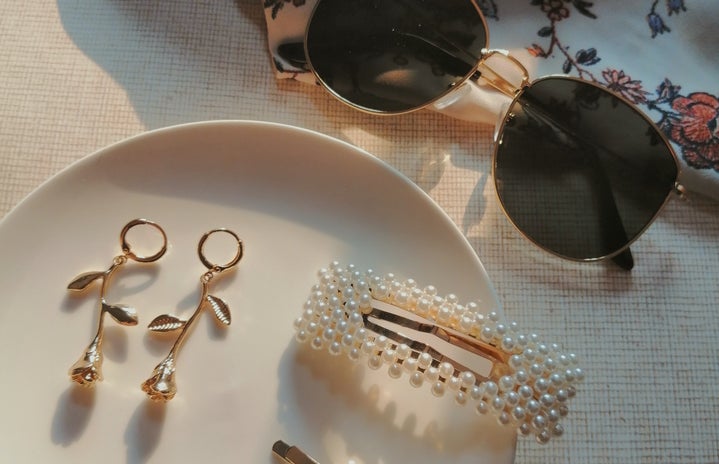“Likes are the social media currency undergirding an entire influencer economy, inspiring a million Kardashian wannabes and giving many of us regular people daily endorphin hits,” said Amy Chorzick in a New York Times article last month.
If the “like” currency disappears, what happens to the influencer economy and the endorphin hits?
Instagram CEO Adam Mosseri announced that Instagram will begin test hiding likes in the United States to “depressurize Instagram” and “make it less of a competition” at a WIRED25 conference in November.
He said users would still be able to see their own likes but not those of others.
The update is intended to make Instagram safer, but current users, many of whom are college-aged, are still weighing the benefits and drawbacks of this decision.
Instagram’s website states that, as of January, it has over 1 billion users. Thirty percent of these users are between 18 to 24 years old, according to Statista.
This means that there’s 30 million college-aged “Kardashian wannabes” using Instagram for a spectrum of reasons.
Some use it for fun, like to show off their fluffy cat or share a new cake recipe. Others, like teenagers and young adults, use it as a social tool to share, like and judge their friend’s pictures, as well as post their own.
Finally, there’s the influencers and businesses, using Instagram not only as a social media platform but as a money-making tool.
Ty Livezey, a UF student majoring in economics, makes money off of Instagram and thinks that removing likes takes away an important metric for advertisers.
Livezey runs theme pages, such as travel and cars, and said he has a sizable following that allows him to sell ad space to companies, which might become more complicated if likes are removed from the public eye.
“It makes it a lot harder for page owners to get brand deals because we have to prove we actually have the engagement rate we claim we do,” he said, explaining how he would be affected.
Although it’s possible to send a screenshot of your likes to sponsors, it can be problematic when engagement data is being falsified, which is happening more often, he said.
When buying from private pages, you can’t use third-party applications to analyze their posts.
“There’s also apps that let you falsify Instagram data and a lot of pages are using these to inflate their rates,” said Livezey. Therefore, for people making money off of advertising on Instagram, this change might not be too favorable.
However, even though Instagram taking away likes might negatively affect Livezey, he can see the benefits behind it.
“Removing the currency makes the platform less about comparing and removes incentives for user to take advantage of bot accounts to boost engagement,” he said.
This means that users won’t feel bad about not getting as many likes as other people, and there will be less access to artificially boosting engagement levels.
On Instagram, an increasing amount of young people — particularly women– have made money on Instagram by becoming influencers, or users with a large social-media following who typically sell a product or are sponsored by a brand they model.
Influencers are dependent on likes because they reflect their success, like the Rolex watch of a businessperson. The likes count also helps them earn commission, raise engagement and, of course, serve as an endorphin-boost.
Kiersten Hollerback, a 21-year-old marketing major, is a self-proclaimed influencer.
With over 20,000 followers on Instagram, she says she uses her platform to spread positivity and promote beauty products from sponsors.
For her, likes are important for reflecting her page’s engagement statistics.
“Brands will look at your whole profile,” Hollerback said, “They’ll ask: Do they have good engagement?” She finds that likes and comments — unlike followers — can’t be bought.
Instagram taking away likes will have a toll on influencers, according to Hollerback.
“It can pose an issue because if likes are no longer a thing that you see, it might cause people to stop liking on Instagram,” she said. This will affect the bigger influencers, who make $200 to $500 a post, because it will lower their engagement and income.
However, Hollerback thinks that Instagram taking away likes is healthy because it makes mental health a priority.
“Honestly, I don’t care if it affects people’s incomes,” said Hollerback. “I think taking away the likes it going to help people because they’re not going to be judged as much.”
Other people are also in favor of Moserri’s actions. Regular users, or the ones posting pictures just for fun, have found that Instagram affects people in a more negative light.
“Instagram encourages narcissism and bragging,” said UF student Khloe Dang, a health-science freshman. She said that she uses it less now that she’s in college, but it’s definitely something you can get caught up in and waste a lot of time on.
“I think the change will help foster positivity,” said Dang.
As college students continue to assess the pros and cons and Instagram continues to test the feature, the future of the app is unknown.
“So many teenagers are fixated on these numbers that mean nothing,” said Livezey. “Instagram wants to create a platform that brings people together, and comparing likes isn’t contributing to creating the vision Instagram has in mind.”


